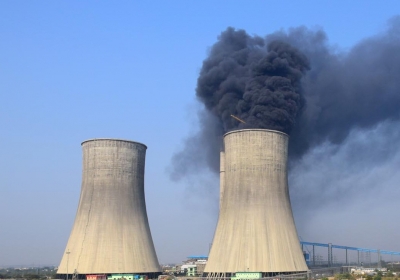New Delhi: India continued to send mixed signals about its future coal use, as new plant commissioning slowed to their lowest in years, but plans for new projects persist and no clear retirement plans are in place, Global Energy Monitor’s ninth annual survey of the coal plant pipeline said on Wednesday.
The report finds that India only commissioned 3.5 gigawatts (GW) of new coal power capacity in 2022. Excluding a pandemic slump in 2020, this was the lowest annual addition since a 2014 high, and from 2015 to 2022, India’s pre-construction coal power capacity also decreased by nearly 88 per cent to 28.5 GW.
The report finds that coal power capacity retirements globally reached 26 gigawatts (GW) in 2022, and another 25 GW received an announced close-by date of 2030.
India’s planned capacity increased by 2.6 GW, but this was still far behind China’s proposed coal expansion which offset planned coal-fired capacity reductions in the rest of the world.
Globally, the operating coal fleet grew by 19.5 GW, or less than 1 per cent, in 2022, with 14 countries in total adding new coal power. More than half (59 per cent) of the 45.5 GW of newly commissioned capacity was in China, followed by India with 3.5 GW new coal-fired capacity coming online in 2022.
Outside China, the global coal fleet continued to shrink, although at a slower rate than in previous years.
The report highlights that while coal under development — or coal in pre-construction and construction — has collapsed by two thirds since the Paris agreement, nearly 350 GW of new capacity is still proposed across 33 countries, and an additional 192 GW of capacity is under construction.
India has 28.5 GW of coal power capacity planned, about a third of which is already permitted, and 32 GW of coal power capacity under construction.
Tamil Nadu, Odisha and Uttar Pradesh are the states with the highest capacities of coal power under development.
To stay on track, all existing coal plants must be retired by 2030 in the world’s richest countries, and by 2040 everywhere, and there is no room for any new coal plants to come online. While newly proposed coal power capacity has declined significantly, the world is not retiring existing coal plants fast enough.
Phasing out operating coal power by 2040 would require an average of 117 GW of retirements per year globally, or four and a half times the capacity retired last year. An average of 60 GW must come offline in OECD countries each year to meet their 2030 coal phaseout deadline, and for non-OECD countries, 91 GW each year for their 2040 deadline.
Accounting for coal plants under construction and in consideration (537 GW) would require even steeper cuts. India has only retired 15.7 GW to date. With more than 30 GW of operating coal capacity at units above 30 years old, India should pursue mechanisms to retire old, polluting units as soon as possible and repurpose the sites Ato support renewables.
“The more new coal projects come online, the steeper the cuts and commitments need to be in the future,” said Flora Champenois, lead author of the report and project manager for Global Energy Monitor’s Global Coal Plant Tracker.
“At this rate, the transition away from existing and new coal isn’t happening fast enough to avoid climate chaos. The IPCC and the UN have both renewed the marching order to wind down coal power globally in what may be our last chance to avoid the worst of a warming planet’s harms.”
“With efficient planning and implementation, India has enough coal capacity to meet peak demand. It is the mismanagement of coal stocks at power stations and its evacuation which leads to power deficits at particularly high demand times and not the lack of power generation or coal mining capacity,” said Sunil Dahiya, Analyst at Centre for Research on Energy and Clean Air (CREA).
“Setting up new coal plants or opening up new coal mines will only worsen the situation, resulting in new stranded assets both in the coal mining and power sectors while destroying pristine forests and wildlife, and affecting public health and social well being. India needs a clear policy on new coal and peaking coal year targets for all consuming sectors.”
–IANS


Comments are closed.